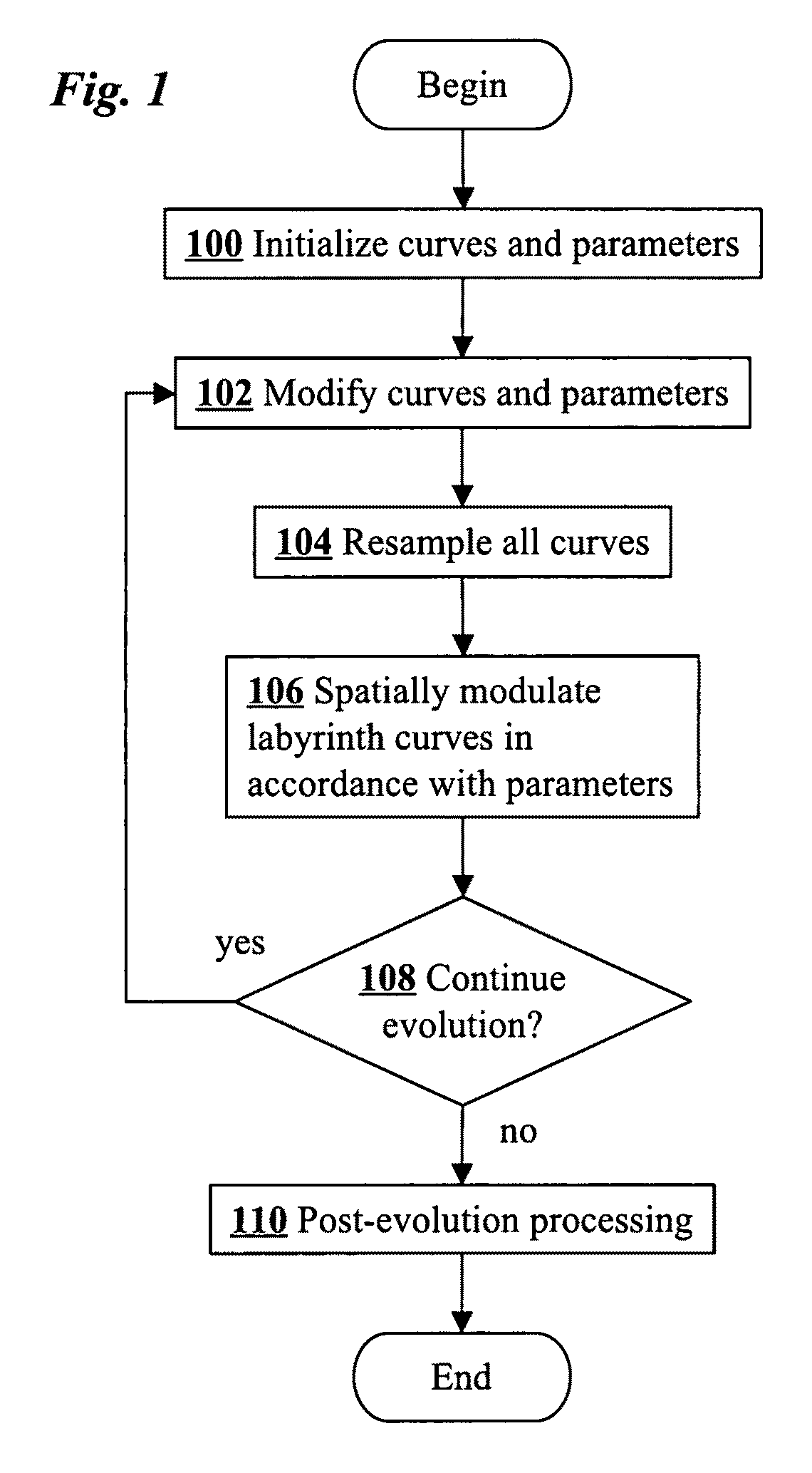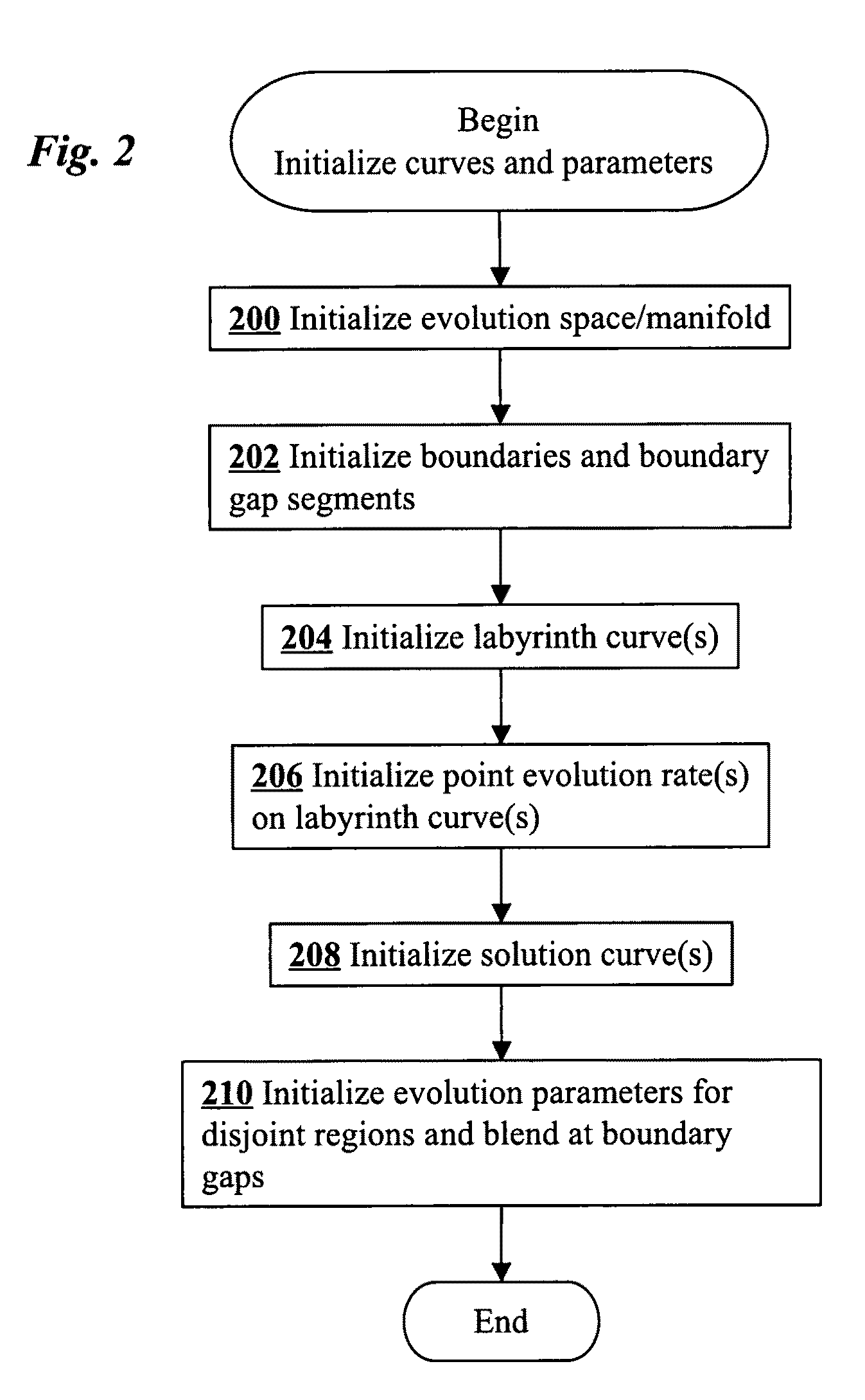Interactive labyrinth curve generation and applications thereof
a technology of interactive labyrinth and labyrinth, applied in the field of computer graphics and computer assisted design techniques, can solve the problems of large and complex maze and labyrinth patterns that are time-consuming and manual production, grids that are often stretched, and severe distortion of patterns, so as to reduce the number of strips and simplify assembly.
- Summary
- Abstract
- Description
- Claims
- Application Information
AI Technical Summary
Benefits of technology
Problems solved by technology
Method used
Image
Examples
Embodiment Construction
[0054]Main steps of a method for generating labyrinth curves according to an embodiment of the present invention are shown in FIG. 1. The method includes an initialization step 100 in which curve evolution parameters are initialized as well as a curve network including one or more curves. Each curve is evolved by iterating steps 102, 104, 106 as long as a decision is made at step 108 to continue the evolution. When the evolution is stopped, a post-evolution processing 110 is performed. Step 102 of the iterative process allows the curve network and evolution parameters to be modified by a user so that the evolution can be interactively guided as it progresses. In step 104 the curve is resampled to increase the uniformity of spacing between adjacent point samples of the curve, and in step 106 the curve is spatially modulated in accordance with the curve evolution parameters.
[0055]The effect of the iterative process shown in FIG. 1 is to evolve an initialized curve into an evolved curv...
PUM
 Login to View More
Login to View More Abstract
Description
Claims
Application Information
 Login to View More
Login to View More - R&D
- Intellectual Property
- Life Sciences
- Materials
- Tech Scout
- Unparalleled Data Quality
- Higher Quality Content
- 60% Fewer Hallucinations
Browse by: Latest US Patents, China's latest patents, Technical Efficacy Thesaurus, Application Domain, Technology Topic, Popular Technical Reports.
© 2025 PatSnap. All rights reserved.Legal|Privacy policy|Modern Slavery Act Transparency Statement|Sitemap|About US| Contact US: help@patsnap.com



